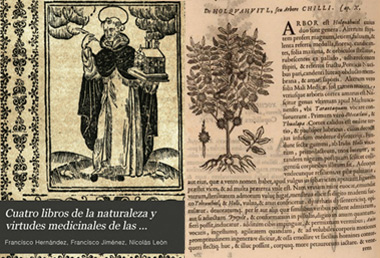Chile Chapters
Chile, Chili, or Chilli? What's the Correct Spelling?
When talking about the hot pepper of the Capsicum family or the spicy meat stew, you may find that everyone seems to be using a different spelling for the word. That's because there is no right answer to this question, though I would say that one is more wrong than the others. The dictionary is of very little help, giving several alternate spellings of the word.
So which version should you use in your writing? In the process of researching and writing this article, I'm trying to set my own standard, rather than having to choose a spelling at random.
There are preferred spellings in certain geographic areas, for different reasons.
The Origins of the Word “Chilli”
In Mesoamerican, the native language of the Aztecs was Nahuatl. This has been spoken since at least 7th century AD. This was not known to be a written language. When Spaniards romanized (latinised) the word for these newly discovered spicy fruits, the word they used was chilli.

As this article at SpiceLines mentions, one of the earliest written references to this word is in a book by Francisco Hernández de Toledo, originally written in Latin, and published in Mexico in 1615. Francisco was a physician and botanist, who embarked on a scientific mission to study medicinal plants in the New World, by order of King Phillip II.
Thanks to the wonders of Google Books and a scanned copy from Harvard College Library, this text can be viewed and searched for free. “Cuatro libros de la naturaleza y virtudes medicinales de las plantas y animales de la Nueva España”, or “Four books of nature and medicinal virtues of the plants and animals of the new Spain”.
There are a few references to “arbol chilli”. The transcription may be slightly off here:
CAP. X. Del Arbol Qvellaman Holquahuitl, O
arbol chilli.
Deste arbol llamado holquahuitl, se hallan dos generos, el vno produze el tronco lico leonado, lleno de vn meollo, lento y pegajoso, las flores blancas, y las ojas muy grandes, y que tienen vnas glouos redondos a manera de estrellas, que de rubios tiran arrojos, pegados al mismo tronco llenos de fruto blanco del tamaño de avellanas cubicrtas con vnas telillas amarillos, y de sabor amargo, el otro tiene las ojas de naranjo, pero mayores, la corteza de ambos arboles es amarga.”
Using an online translator and taking a look at the original drawing, this appears to be talking about the small white (Peruvian) habanero. It is described as a white fruit about the size of a hazelnut. Perhaps you Spanish and Latin-fluent botanists could provide confirmation there...
This “chilli” spelling is the most common in the UK and in India.
Adicto a Los Chiles
But, in present-day Mexico, the Spanish word has transformed into “chile”. Note that while this is also the spelling of the South American country, that has an entirely unrelated origin and meaning. This spelling has bled over into the United States and is perhaps the most common form here. This is the spelling that feels the most “right” to me; even though it is a loanword that isn’t pronounced like it reads.
So when referring to the capsicum pepper pods, both chile and chilli are valid, whether you side with the original romanization, or the eventual spelling by the people living in its place of origin.
The Stew: Chili Con Carne
The word “Chili” on the other hand, has become the generally accepted spelling in the United States for the beef dish, Chili con carne. Chili cook-offs, festivals, and competitions are a big deal across the USA. Everyone wants to have the best chili in their respective city or state. Texas has a particular affinity for the stuff, and even signed a resolution making it the official state dish.
I would reserve this spelling for this dish only, to avoid unnecessary confusion and the wrath of grammar-conscious chili chefs. It doesn’t feel right to me either. According to the dictionary, it’s not entirely wrong, and you can see this popularized in a certain red hot band with a sick bass player.
Get On With It!
So, in the end, what I've decided to use is:
- Chile - The pepper. "The small red hot-tasting pod of a type of capsicum used for flavouring sauces, pickles, etc", especially when referring to peppers coming from Mexico and South America.
- Chilli - Alternate spelling for the capsicum pepper, especially in the context of the U.K. and India. International English-speakers are keen on this, so do not be afraid of this spelling.
- Chili - Chili con carne - The "A Mexican-style dish made with chiles or chile powder, ground or diced beef, chopped onion and pepper, and usually kidney beans and tomatoes."
Personally, I can't decide whether I prefer "chile" or "chilli" here in the USA. I continue to alternate between the two spellings on this site.
More Information and Sources
- http://en.wikipedia.org/wiki/Nahuatl, http://en.wikipedia.org/wiki/Chile_pepper
- http://www.spicelines.com/2008/08/you_say_chili_i_say_chile_a_cu.htm
- http://www.eatmorechiles.com/meet.html
- http://en.wikipedia.org/wiki/Francisco_Hern%C3%A1ndez_de_Toledo
